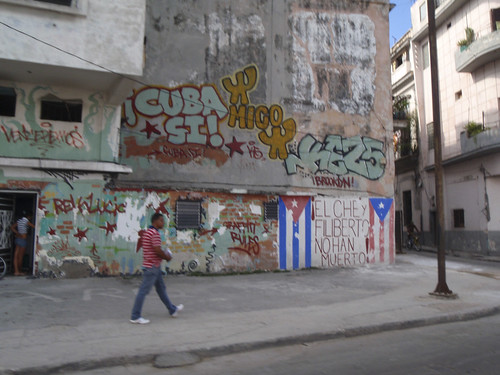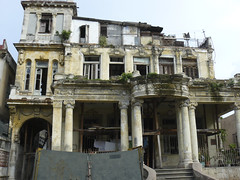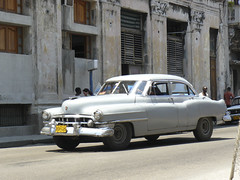
Tourism is a big industry for Cuba. Thousands of Europeans and Canadians visit every year, but US citizens can not. Technically, it’s not illegal for Americans to go to Cuba, they just are not allowed to spend any money in the country. This sounds a bit crazy, but it’s one of the ways the US government tries to keep American dollars out of the hands of the Cuban government. Cubans, however, do not discriminate between tourist dollars. In Cuba there are two systems of money; the Cuban peso (or CUP) is the currency used by Cubans, and the Convertible Cuban peso (or CUC) which is used by tourists and those Cubans in the tourism industry. One CUC = 24 CUP= 1.34 Euros= .80 US Dollars. When traveling to Cuba, bring any currency other than the US dollar, as there is a 10% tax for exchanging dollars. Even though the typical Cuban makes about $20 dollars/month, it’s not cheap to travel in Cuba due to the Convertible Cuban Peso exchange rate. Lodging at hotels are expensive, and the cost of transportation is exorbitant. Bus travel to and from destinations is costly, but even more so are taxis within the city limits.
Maybe 5 or so years ago, the mojito drink made its way into mainstream American bars and restaurants, ushering in a whole new cuisine to go with the drink. We must have talented chefs in the US because Cuban food is delicious in America, but not in Cuba. There is little variation available in Cuba–rice, black beans, cabbage salad, and fried chicken/fish/beef. And no spices–not even salt and pepper. I found Cuban food to be very bland, and after a week of eating the same thing, we had to break up the monotony and eat pizza at El Rapido, Cuba’s fast food chain.


As I mentioned in a previous post it was suffocatingly hot, I was delirious from the heat–making sightseeing and anything related to being outside unpleasant. But we suffered through the heat, and walked around Havana, an ethnically diverse city and the largest city in the Caribbean at 2.5 million people. Regardless of their dire straits, Cubans aren’t bothered by much, they live life to its fullest–dancing and celebrating where-ever and when-ever they can. Grand buildings and colonial homes built during the height of Spanish rule can be seen as a reminder of the grandeur that was once Cuba. These buildings, regardless of missing a ceiling or an exterior wall, are fully occupied. It’s not uncommon for 3 generations of the same family to be living under one roof. The houses crumbling, the vintage cars stalling, and the people really just living in the moment bring feelings of nostalgia for the past, despair for the present and hope for the future.
You didn’t happen to find Alexei in Cuba did you? He has been MIA for the better part of this year…maybe longer. Can’t wait to see you guys.
Wow, this is a well put together site, and these Cuba posts are so interesting! I love it. I am going to put a link to your site to my travel site at: http://www.pyrodes.com. Cheers!